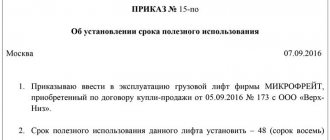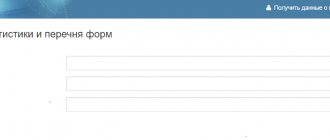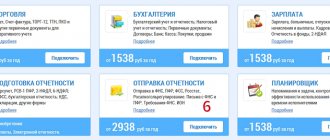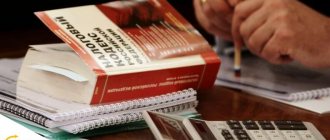KBK
Starting from the new year, it is necessary to apply updated budget classification codes in accounting and take into account the changes associated with them:
- in the order of formation of BSC No. 85n - new KVRs (246, 247, 614, 624, 635 and 816);
- the current order No. 207n for all participants in the budget process (both regional and local) will be replaced by new lists of the KBK No. 99n;
- Amendments have been made to the procedure for applying KOSGU No. 209n. For example, subarticle 139 of KOSGU was added, which reflects income from reimbursement of costs for measures to reduce injuries, occupational diseases, etc.
The amendments should be taken into account when updating accounting policies for the next year.
- Order of the Ministry of Finance of Russia dated 06/08/2020 N 98n
- Order of the Ministry of Finance of Russia dated 06/08/2020 N 99n
- Order of the Ministry of Finance of Russia dated September 29, 2020 N 222n
- Order of the Ministry of Finance of Russia dated October 12, 2020 N 236n
Budget chart of accounts
The Ministry of Finance has developed a unified chart of accounts for the budgetary sector and instructions for its application (Order of the Ministry of Finance No. 157n dated December 1, 2010). The specified register is valid for both government agencies and BUs. In the unified plan itself there is an indication that each type of government organization must use a private chart of accounts:
- AU - Order No. 183n dated December 23, 2010;
- BU - Order No. 174n dated December 16, 2010;
- KU - Order No. 162n dated December 6, 2010.
PS for BU, AU, CU consists of balance sheet and off-balance sheet accounts. Balance sheet accounts are divided into five sections:
- Non-financial assets (fixed assets, intangible assets, non-relevant legal assets, financial assets, finished products, depreciation, expenses, investments in non-financial assets).
- Financial assets (cash, securities, accounts receivable, etc.).
- Liabilities (payments, accounts payable).
- Financial result (income and expense accounts).
- Authorization of expenses (appropriations, LBO, planned indicators).
Off-balance sheet accounts reflect movements in the valuation of those assets that do not belong to the organization or, for established reasons, cannot be accounted for on balance sheet accounts. For example, fixed assets worth up to 10,000 rubles.
New payment system
From 2021, a new system of treasury accounts is being introduced. In accordance with it, all settlements on personal accounts opened with the Treasury or financial authorities will go through the Treasury, and bank accounts of financial authorities with the Central Bank of the Russian Federation will be closed.
A number of adopted by-laws regulate the procedure for registering and conducting transactions on personal accounts and the rules for providing cash and funds for card payments.
A single treasury account No. 401 02 has been established for the Treasury, to which the Treasury and financial authorities have opened several more treasury accounts (numbers starting with “0”), different in types of funds and operations performed. Personal accounts of budgetary and autonomous institutions, revenue administrators, etc. have been opened in addition to treasury accounts. Transactions between personal accounts opened with the Treasury and financial authorities will be carried out by the Treasury without issuing payment orders.
More information about the treasury payment system:
The first days of working as an accountant of a budgetary institution
Published 04/23/2018 22:19 Cry from the soul: “I am an accountant. She worked in commerce for many years. And then recently they suggested trying to keep records in a budget organization. I agreed, but apparently it was in vain. Help me, please, where to start? Otherwise I’m already thinking about quitting.” Have you come across such questions on the forums? I would like to help a novice accountant of a budget organization take his first steps.
Seven years ago, when I got a job at my music school immediately as a chief accountant, I had only teaching experience behind me, that is, theoretical knowledge - as it should be, and not a day of work as an accountant. Now, I probably wouldn’t agree to such an adventure. But now I already have experience working in the accounting department of a budgetary institution, so I can afford to give some advice to a novice accountant in the public sector. The first thing you need to familiarize yourself with is the plan of financial and economic activities and the budget schedule for the current year in order to understand for what purposes the funding is provided. And, of course, find out the specifics of the institution, what financial security codes are required to keep records. This information can be found in the accounting policies. In case of its absence, it will be necessary to take measures to compile it in the near future. Be sure to check whether the data from the PFHD is included in the program? This can be done by filling out Form 737. If column 4 is filled out, then everything is in order,
If not, then urgently generate “Planned appointments” documents.
The next step, in my opinion, is to contact the higher organization with a request to provide a list of reports that they will need to submit, indicating the deadlines. Another important point is to find out from the founder the process of financing the institution’s expenses, at what point to submit applications and in what time frame they will be financed. Ask for application and report templates. Of course, you need to get a dated diary or planner and write down reporting deadlines and current affairs for the coming week in it. The next step is to take the latest statement from your personal account and compare the balance at the end of the day with the information reflected in the program. To obtain this information, you can build a balance sheet for account 201.11
or a cash flow certificate.
After this comparison, you will understand whether cash flow transactions in the accounts were reflected in a timely manner or whether it will take time to restore them. An extract from the personal account should be posted daily, reflecting the receipt of funds using the documents “Cash Receipts”,
"Receipt of parental fees."
To reflect the debiting of funds from the account and make payment, you will need to create an “Application for cash expense” or “Cash disposal”, to receive cash - an “Application for cash (bank card)”.
When conducting business activities, your institution will receive documents from suppliers; they will need to be reflected in the 1C program. Depending on the content of the transaction, these may be documents: “Services of third parties”,
“Purchase of OS, intangible assets”,
“Purchase of materials”, etc.
Naturally, all accruals in the program must be reflected only on the basis of primary documents. I remember that in the first year of work I could not create reports “beautifully” - there was only redness all around. And I couldn’t understand what to do with all this and how to submit reports? I called my sister in tears that nothing was working out for me, not a single amount was being closed. She quickly reassured me with the question: “Have you charged all the services?” It turns out that I made a big mistake - I made all the payments, but did not make any accruals at all. After eliminating this shortcoming, all my reports were generated, and my joy knew no bounds. Therefore, regularly create a balance sheet and analyze it. Another important point is to reconcile payments with all suppliers, with tax authorities and extra-budgetary funds, ask the Federal Tax Service for the “List of tax returns (calculations) and financial statements” to understand whether all reports have been provided. Make a list of all “passwords and logins” for working with various programs - SUFD, 1C, Web - consolidation, etc. (just make sure that access to it is limited). Find out the terms of payment of wages in the institution, so as not to violate them due to carelessness. At the end of the month, it is mandatory to accrue wages and insurance contributions for wages.
Before transferring wages to employees, you need to check the amounts in the transfer registers with the turnover balances in the relevant accounts and in the context of the CFO, in order to once again verify the correctness of the calculations made. Depreciation should be calculated monthly for fixed assets and intangible assets,
write-off of expenses,
accrual of income.
In order to avoid unnecessary errors in the program, conduct a technological analysis.
There is also a wonderful “Period Closing Assistant” that will tell you which mandatory procedures have not been carried out.
1C developers take care of us accountants and try to make our lives easier. To do this, they have provided such wonderful opportunities as “Exchange with treasury systems and bank institutions”, uploading reports to the Web - consolidation and to the tax authorities. I believe that these tools should definitely be used. Let you spend a lot of time one day learning how to use them in your activities, but later these skills will turn into a free minute when it is sorely lacking. Another very important point: if you came to work at the institution after another accountant, do not be lazy before the start of the reporting period to reconcile the balances at the end of the period in the annual reporting for the previous period with the opening balances in the 1C program. Believe me, this will help save time during the busy period of the reporting period. And don't be afraid to ask questions. If you encounter a problem, call the founder or colleagues. The world is not without good people, and, as they say, one head is good, but two are better. I appeal to all readers - if I missed something, add to the list in the comments.
Author of the article: Tatyana Zudilova
Did you like the article? Subscribe to the newsletter for new materials
Add a comment
Comments
0 #13 Olga 02/04/2021 22:47 Thank you very much for the useful information
Quote
+6 #12 Irina 06/07/2020 03:32 Tatyana, thank you very much for such a wonderful article, it was very useful and understandable for me as a beginner)))
Quote
+7 #11 Love 05/16/2020 22:30 Thank you, I wish you good health and good luck. Very useful article.
Quote
+2 #10 Tatyana Nikandrovna Voronina 04/07/2020 20:41 Thank you, it’s useful for getting started!
Quote
+2 Juliusadush 11/28/2019 02:34 Just what you need
Quote
+3 Tatyana 08/10/2019 04:17 Everything is described in an accessible form, excellent!
Quote
+3 Natalya 06/13/2019 16:15 thank you very much, I’m going to an interview now, I’m very glad that I read you.
Quote
+1 Nadezhda 04/23/2019 06:11 Thank you very much. Today I'm going for an interview, so it was very informative for me
Quote
+4 Marina 04/05/2019 20:02 Very well and accessible written. Thank you!
Quote
0 Lilia 03/17/2019 04:47 Thank you...I liked it...
Quote
+1 Anna 03/13/2019 04:50 Very interestingly written
Quote
+5 Irina 02/27/2019 23:44 Good evening. I liked the article.
Quote
+4 Gulnaz 02.02.2019 22:08 Good evening! I really liked it.
Quote
Update list of comments
JComments
New details in payments
Due to changes in the accounting system from January 1, tax payments must indicate new details. In the field that currently reflects the UFC account number, you will need to indicate a new treasury account starting with 03100. The new UFC account (starting with 40102) is entered on the line above, in the field for the recipient bank account number.
You also need to indicate the new BIC and the name of the recipient's bank.
- Letter of the Federal Tax Service of Russia dated October 8, 2020 N KCH-4-8/16504
- Federal Law of December 27, 2019 N 479-FZ
- Order of the Treasury of Russia dated May 13, 2020 N 20н
- Order of the Treasury of Russia dated May 15, 2020 N 22н
- Order of the Ministry of Finance of Russia dated June 23, 2020 N 119n
Reporting using new forms
In 2021, a number of reports to the Federal Tax Service and the Pension Fund must be submitted using updated forms:
- 6-NDFL for the first quarter - no later than April 30;
- DAM for 2021 no later than February 1;
- VAT return for the fourth quarter of 2021 – no later than January 25;
- income tax return for 2021 – until March 29 inclusive.
FSBU from 2021: collection of materials
Fill out the order form and receive a free collection
“New FSBU 2020-2021”! The selection includes an overview of changes to FAS 6/2020, 26/2020, 5/2019, 25/2018, ready-made solutions for accounting for various transactions, examples of postings to them, etc.






